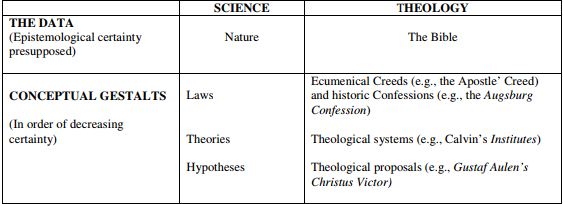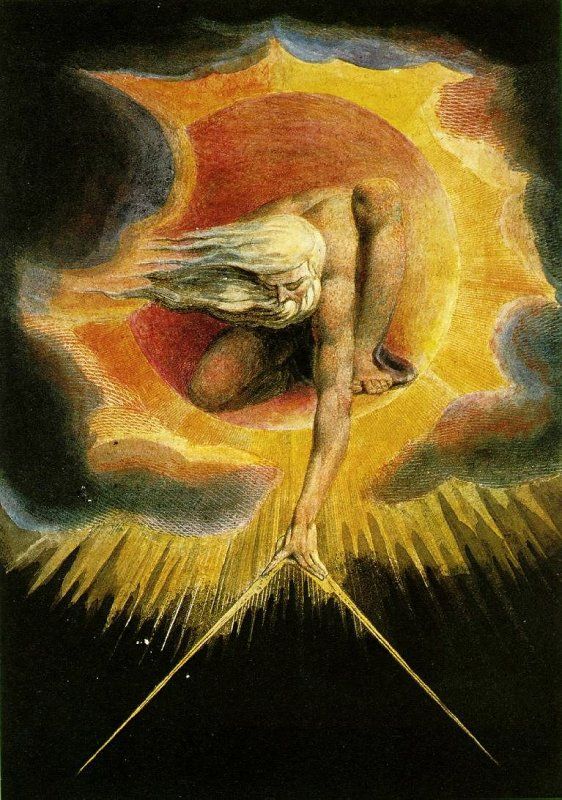
Richard Dawkins, the famous British atheist, famously asserts that since science works, it must be true and we must believe what it says. If Christianity clashes with science, so much the worse for Christianity. For this reason, some college students are persuaded to abandon their Christian faith once they conclude that it has been discredited by science.
The perception that science has discredited Christianity is based on two assumptions. First, the results of science are empirically verified and indubitable in contrast to the unverifiable claims of Christianity. Second, Christianity not only lacks explanatory power; it is in conflict with the empirical findings of science. For example, God becomes redundant once evolution explains the origins of species and inflationary cosmology explains the origin of the multiverse. We are reminded of the famous incident when Napoleon Bonaparte questioned Pierre Laplace why his large book on cosmology never mentioned the Creator, to which Laplace retorted, “I had no need of that hypothesis.”
However, neither Dawkins nor Laplace should be given the last word. There are other eminent scientists who do not agree that there is conflict between science and Christianity. Furthermore, science itself faces several intractable problems.
First, we note the problem of induction. For example, scientists apply the following process of reasoning when they try to identify a sample of clear liquid in a flask.
Hypothesis: If this liquid is water, it should boil at 100 degree Celsius. [If P then Q]
Experimental result: This liquid boils at 100 degree Celsius. [Q]
Scientific conclusion: This liquid is therefore water. [Therefore, P]
It is apparent that this form of reasoning commits the logical fallacy of affirming the consequent: [If (1) P then Q, (2) Q, (3) Therefore, P].
Second, science can only produce probabilistic truth claims. That is to say, no amount of repeated testing can generalize a universal truth claim. The prediction that “the sun will rise from the East” has been confirmed to be true billions of times. But this does not guarantee that “the sun will rise from the East” tomorrow. In short, no amount of observation can absolutely confirm a theory.
Third, David Hume has pointed out that science is beset by a serious epistemological problem. He noted that while Newton’s theory of gravity has been successful in explaining motion, in reality we can’t observe the forces themselves. Likewise, while we may conclude that a ball causes another ball to move after they collide, in reality we never observe or experience the forces of the collision. We don’t see the causal interaction between the balls, but we cannot help believing some kind of metaphysical “stuff” causes the interaction. Hume concluded his Treatise of Human Nature with a caution for epistemological modesty for scientists: “We are only acquainted with its [the appearances of objects] effects on the senses, and its power of receiving body. Nothing is more suitable to that philosophy, than a modest scepticism to a certain degree, and a fair confession of ignorance in subjects, that exceed all human capacity.”
 Karl Popper Karl Popper |
 Imre Lakatos Imre Lakatos |
Karl Popper seeks to evade the problem of induction by arguing that the method of science is not verification but falsification, that is, it proposes bold conjectures and tries repeatedly to show them false. A theory is scientific if it is able to state in advance what will count as falsifying it. If it is falsified by reliable and reproducible experimental results, that theory must be abandoned.
Popper seems to have proposed a neat solution to ensure that scientists maintain their methodological rigor. However, Thomas Kuhn argues in his classic book, The Structure of Scientific Revolution, that in practice, scientists do not conform to Popper’s stringent requirement. For example, scientists did not abandon Newton’s theory of gravitation when they discovered that the orbit of Uranus deviates from the path predicted by Newtonian mechanics. Instead, they resorted to post hoc explanations by positing that the irregular path of Uranus must be due to gravitational interference by a yet unseen planet further out of the solar system. Their conjecture turned out to be true!
The history of scientific controversies suggests that scientific observation and testing is theory-laden and influenced by background assumptions. Scientific knowledge is not built on indubitable foundations; it is rather held together as a web of theories/beliefs (W.V. Quine). Theories with the strongest supporting evidence are located at the centre while the weaker and contested theories are located at the fringe. The testing of truth claims is carried out in the context of a reigning scientific paradigm – a disciplinary matrix that comprises a comprehensive set of interlocking laws, theories and applications. The paradigm is accepted or rejected as a whole, based on criteria like simplicity, empirical fit and explanatory power.
Imre Lakatos suggests that science is built around a “hard core” of background theories which generates a “research programme” of “auxiliary hypotheses” for the purpose of testing. These “auxiliary hypotheses” may be altered or abandoned in response to their test results. They form a “protective belt” so that the “hard core” is not under pressure to be altered immediately, if not abandoned upon every scientific testing. Nancey Murphy applies Lakatos’ methodology to theology – the “hard core” would be the Trinitarian doctrine of God, his holiness and revelation in Jesus. “Auxiliary hypotheses” may be theoretical like original sin or practical like Jonathan Edward’s tests for valid signs of a work of the Holy Spirit.
The view that science comprises a hierarchy of truth-claims was actually presaged by John Warwick Montgomery in his article “The Theologian’s Craft.” (1966). He took a cue from Charles Peirce who described scientific investigation as a process of “abduction” whereby the scientist starts with a set of observations and then seeks to find the simplest and most likely explanation. The scientist uses his imagination in the abduction process to generate cycles of theory formation and testing in order to devise conceptual gestalts (or patterns of meaning and interpretation) within which data observed in nature is made intelligible.

As mentioned earlier, theological inquiry is analogous to scientific investigation as it specifies which theory (doctrine) forms the core that is immune to immediate testing, and which theories serve as “auxiliary hypotheses” to be tested. The Bible is the repository of irreducible objective historical facts and truths of divine revelation. The core theory of divine revelation is that Jesus as God incarnate died for the sins of the world and rose again for its justification. The task of the biblical scholar is to discover how the truths of divine revelation were progressively revealed and developed in the Bible. The task of the systematic theologian is to work out the revealed truths discovered by biblical scholars in order to demonstrate their proper relations to the core truth and to construct conceptual gestalts that ‘fit’ the revealed truths in their mutual relations so that they capture the unity and essence of revealed truth.

Both science and theology formulate “auxiliary hypotheses” or “conceptual gestalts” (doctrines) as indirect tests for the veracity of their core theories. The test for scientific theory is whether it explains the observed physical phenomena while the test for doctrine is whether it gives a coherent explanation of the facts of religious experience. The similarities between science and theology extend to cases where truth claims are upheld despite their paradoxical nature. For example, scientists uphold the paradox of the wave-particle theory to explain the contradictory properties of subatomic phenomena while theologians uphold the conceptual gestalt of the Trinity to explain concrete religious experience. In these cases, both the scientists and the theologians are humbly subordinating their theory to match the data at hand.
Michael Polanyi notes that science is not merely an impersonal execution of an abstract algorithm of research. It entails “connoisseurship” that includes transmission of research skills from master to apprentice, the art of problem solving and discovery, and shared commitment to scientific values. Scientific knowledge is not merely objective; it is intensely personal as it requires “conviviality” as scientists are bonded together by shared commitment (faith) to scientific values in their common enterprise. Likewise, theological inquiry is intensely personal. Doctrines are not impersonal construct as they serve as guideposts which set priorities for Christian life. For example, the doctrine of Trinity may appear abstract to the uninitiated, but it touches the prayer life of the theologian.
Scientific theories and doctrines are accepted by the research and interpretative community because of their explanatory power for empirical observation and religious experience. The profound truths uncovered by science and religion should elicit awe and wonder. To quote Immanuel Kant, “Two things fill my mind with ever-increasing wonder and awe, the more often and the more intensely the reflection dwells on them: the starry heavens above me and the moral law within me.”
BONUS ENDING: POETRY FOR PHYSICISTS

** This article was first published with Ethos Institute for Public Christianity, Singapore under the title, Science and Christianity as Analogous Research Programme in April 2019. [A highly recommended website for resources on faith and contemporary issues]
Related Posts on Science and Christianity. 6 Parts.
Part 1: Is there a War between Science and Religion?
Part 2: Christianity and the Rise of Modern Science.
Part 3: The Scope and Limits of Science: A Response to Scientism.
Part 4: Facing Up to the End of Science
Part 5: Models of Integration of Science and Faith
Supplementary Reading:
Did the Medieval Church Teach that the Earth Was Flat?